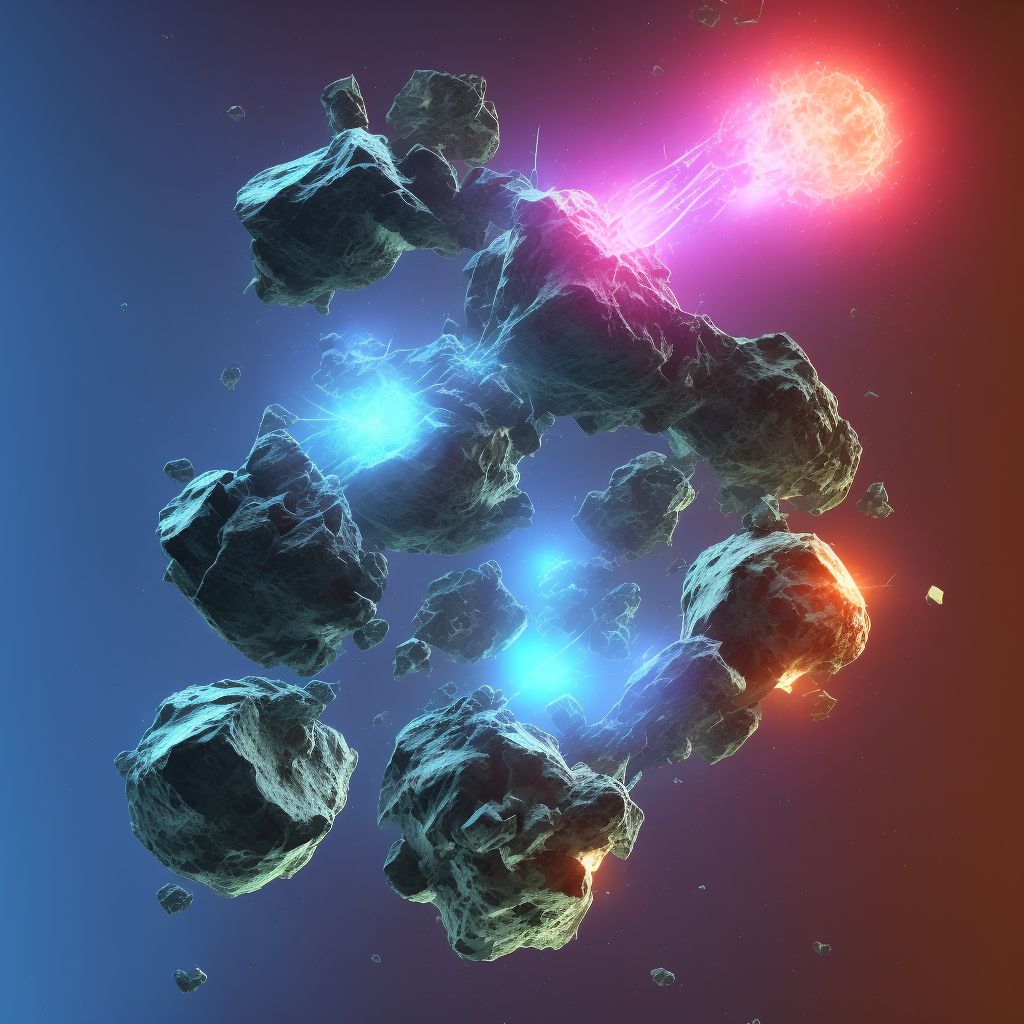
Nondisplaced transverse fracture of shaft of right fibula, subsequent encounter for open fracture type IIIA, IIIB, or IIIC with nonunion Save
ICD-10 code: S82.424N
Disease category: S82.424: Nondisplaced transverse fracture of shaft of right fibula
Nondisplaced Transverse Fracture of Shaft of Right Fibula: Understanding Open Fracture Types IIIA, IIIB, or IIIC with Nonunion
A nondisplaced transverse fracture of the shaft of the right fibula is a specific type of fracture that occurs when the bone breaks horizontally across its shaft. This type of fracture is generally considered less severe than displaced fractures, as the bone fragments remain aligned. However, if left untreated or inadequately managed, it can progress to open fractures with nonunion.
Open fractures occur when the broken bone pierces through the skin, creating an external wound. This exposes the fracture site to potential infections and other complications. Types IIIA, IIIB, or IIIC open fractures are characterized by increasing severity, with IIIA being the least severe and IIIC the most severe in terms of soft tissue damage and associated injuries.
- Type IIIA: In this type of open fracture, the wound is usually small, less than 1 cm in size. Despite the open injury, the soft tissue damage is minimal, and the bone fragments are not excessively contaminated or devitalized.
- Type IIIB: These fractures involve a larger wound, typically exceeding 1 cm in size. The soft tissue damage is more significant, with extensive contamination and devitalization of the bone fragments.
- Type IIIC: This is the most severe form of open fracture, characterized by extensive soft tissue damage, including arterial injury, requiring vascular repair. The wound size can vary, but it often involves massive contamination and bone loss.
Nonunion refers to a condition where the fractured bones fail to heal properly. In the case of nondisplaced transverse fractures of the shaft of the right fibula, nonunion can occur if the initial fracture is not well-stabilized or if the bone healing process is impaired due to various factors.
It is crucial to seek appropriate medical attention for this type of fracture to prevent complications such as open fractures and nonunion. A thorough evaluation by a healthcare professional and adherence to the recommended treatment plan can significantly improve the chances of successful healing and recovery.
Remember, early intervention and proper management are key to minimizing the risk of more severe open fractures and facilitating the healing process. If you suspect you have a nondisplaced transverse fracture of the shaft of your right fibula, consult with a medical professional to receive the necessary care and guidance.
Treatment of Nondisplaced transverse fracture of shaft of right fibula, subsequent encounter for open fracture type IIIA, IIIB, or IIIC with nonunion:
Treatment Options for Nondisplaced Transverse Fracture of Shaft of Right Fibula, Subsequent Encounter for Open Fracture Type IIIA, IIIB, or IIIC with Nonunion
If you have been diagnosed with a nondisplaced transverse fracture of the shaft of the right fibula, subsequent encounter for open fracture type IIIA, IIIB, or IIIC with nonunion, it's crucial to understand the available trea...
To see full information about treatment please Sign up or Log in